These savory Carrot Beef Rolls are pan-seared and glazed with a quick homemade teriyaki sauce. This simple Japanese home-cooked dish is delicious over rice or as a side dish for your weeknight dinner. Make extra for your bento lunchbox the next day!
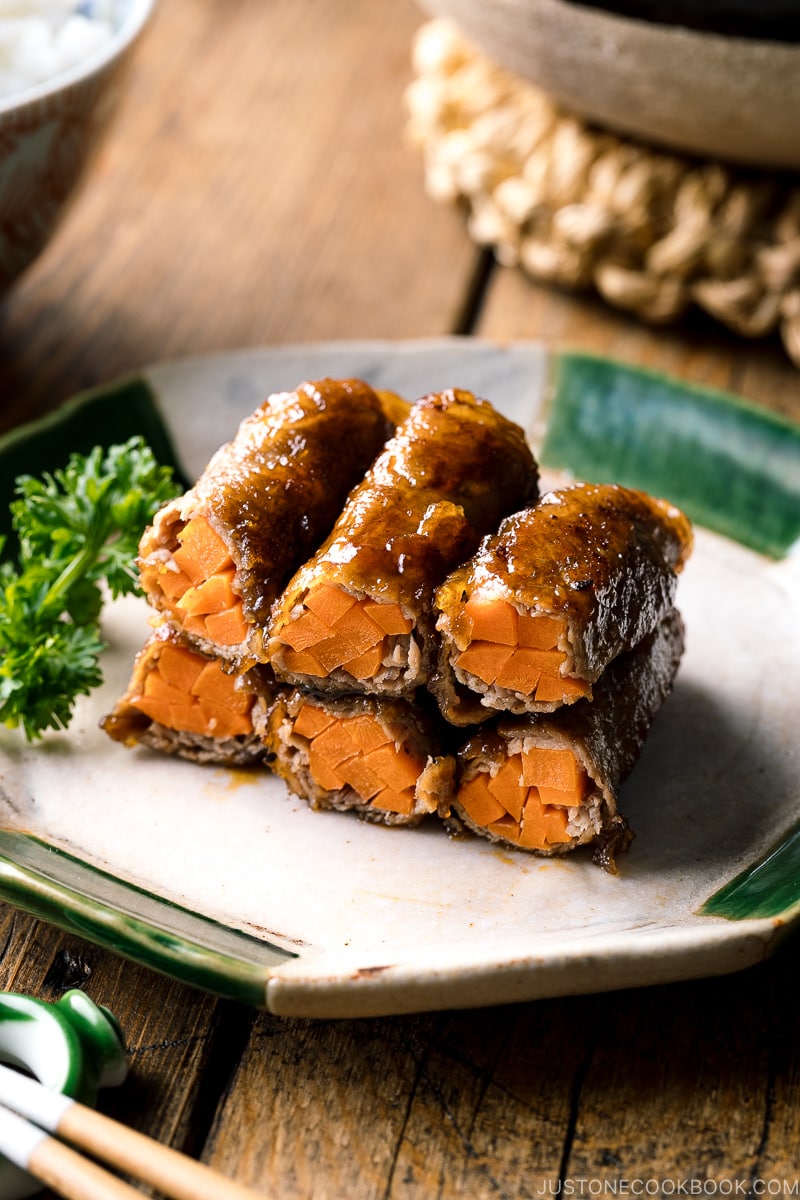
When my kids were small, I tried to incorporate vegetables in their favorite dishes and flavors. This simple trick really helps to introduce them to enjoy a variety of food at a young age. I’ve shared a number of kid-friendly recipes, and today we’re going to make another favorite kid-approved recipe – Nikumaki (肉巻き) or meat roll.
What is Nikumaki (Meat Roll)
Nikumaki is often made with thinly sliced beef or pork. The most common cut would be thinly sliced pork belly, pork loin, or beef rib eye. The paper-thin meat cooks really fast, so it’s an ideal cut for pan-searing.
The Filling
The filling for nikumaki is very versatile. You can include in-season vegetables or year-round vegetables you always have in the refrigerator.
Here are some of the vegetables that pair well with the meat roll (the most common ones in bold).
- Asparagus
- Bell pepper
- Cabbage
- Carrot
- Eggplant
- Green beans
- Gobo (burdock root)
- Iceburg lettuce
- Mizuna
- Okra
- Potato
- Shiso leaves
- Spinach
- Tomato
- Zucchini
Non-Veggie Fillings include:
- Cheese
- Boiled egg
- Mushrooms (enoki, king oyster mushrooms, shimeji, shiitake)
- Nori
Today I will show you how to make Carrot Beef Rolls.
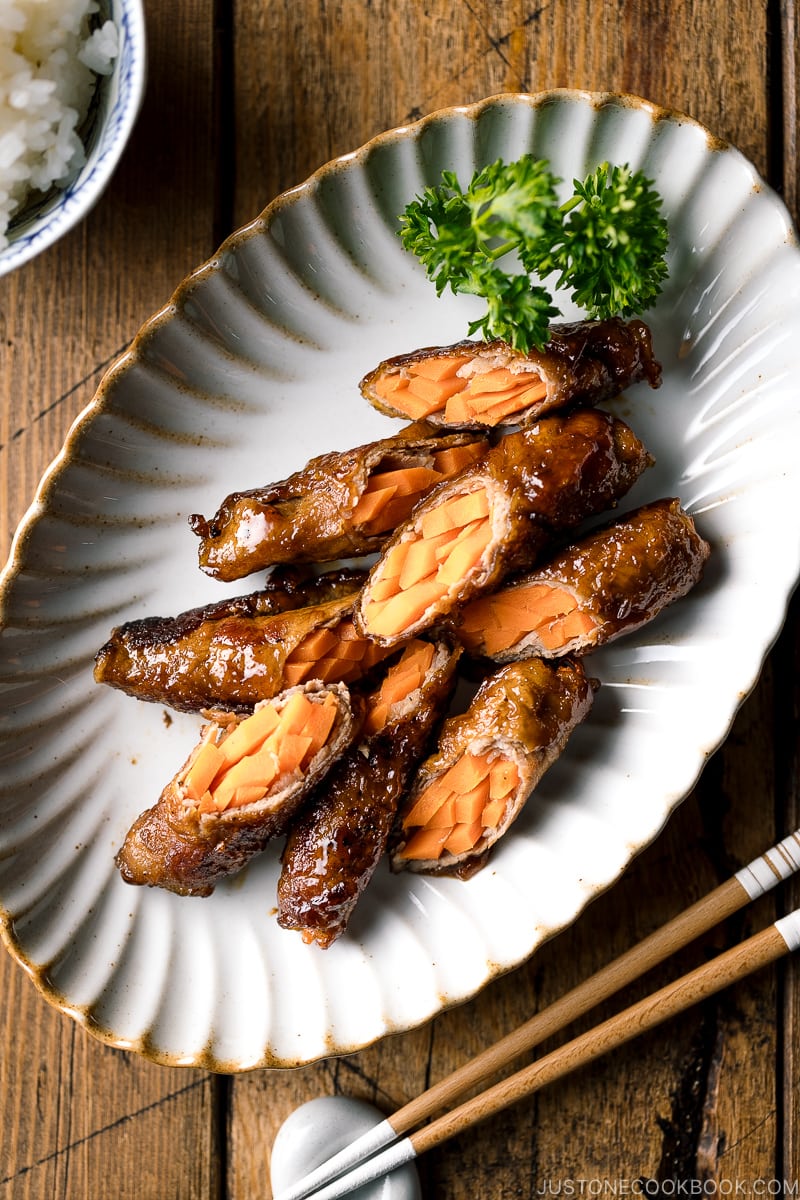
How to Prepare Carrot Beef Rolls
Carrot is almighty vegetable that works with almost every dish and it’s available year round. With a few Japanese pantry condiments, these delicious rolls can be made in a flash.
Ingredients You’ll Need
- Thinly sliced beef (get “Shabu Shabu” beef) or slice your own beef
- Carrot
- Potato starch (cornstarch)
- Soy sauce
- Mirin
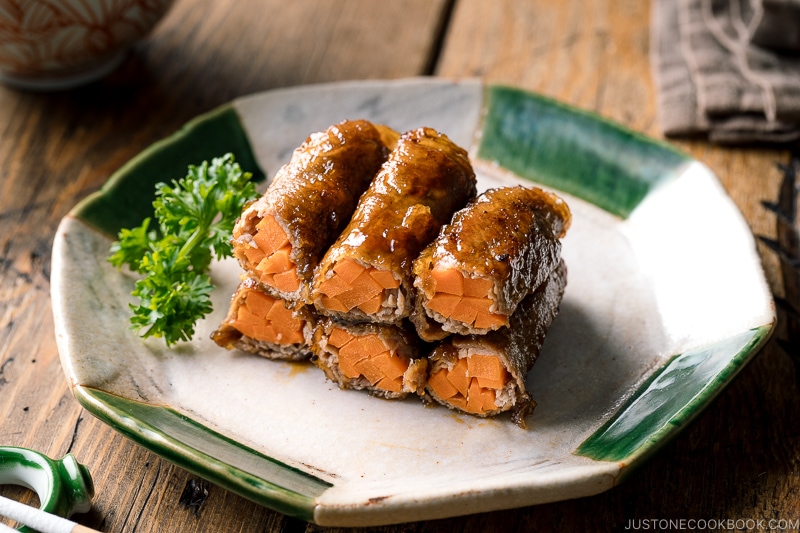
5 Easy Steps
- Blanch the carrot strips in boiling water for 2-3 minutes.
- Roll the carrot strips in a beef slice.
- Coat the beef rolls with potato starch (cornstarch).
- Pan sear the beef rolls.
- Season them with mirin and soy sauce.
Helpful Tips
- Blanching carrots may seem extra work, but this ensures that the carrot inside beef is perfectly cooked. It’s the only way you can focus on searing the beef without overcooking it.
- Tightly roll up so the fillings won’t fall off.
- The starch will lock in all the juice from the meat while keeping it moist. Then after the sauce is added, it will help thicken the sauce and absorb it well.
- Shake the frying pan to coat the meat well with the sauce.
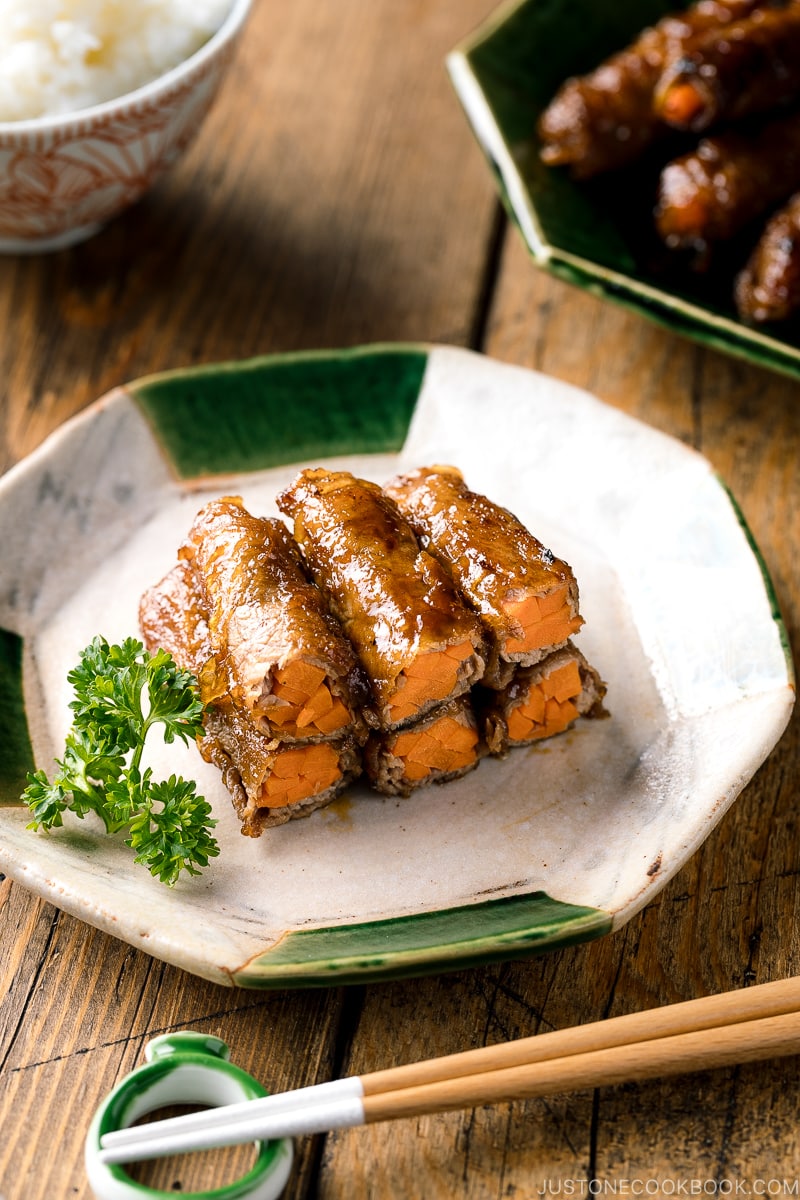
How to Serve Carrot Beef Rolls
This Carrot Beef Rolls recipe makes a fabulous main dish! For a healthy and balanced dinner, you just need to serve it with steamed rice, miso soup, and one or two more side dishes.
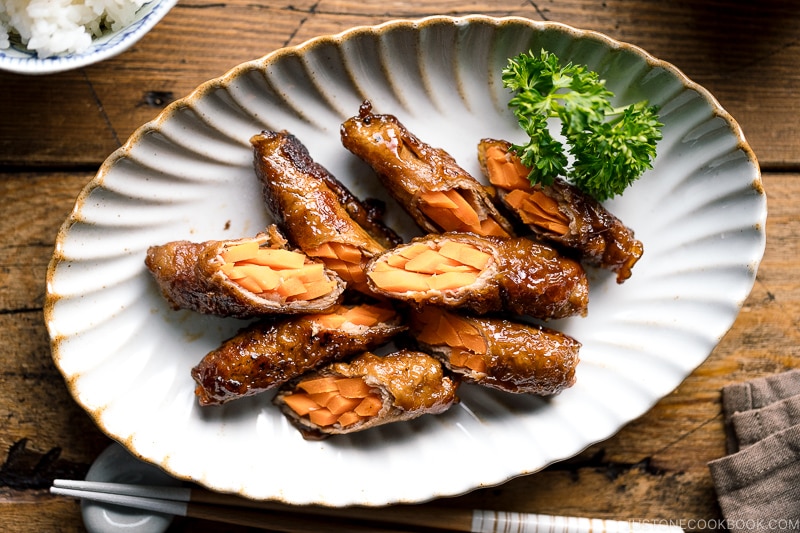
Wish to learn more about Japanese cooking? Sign up for our free newsletter to receive cooking tips & recipe updates! And stay in touch with me on Facebook, Pinterest, YouTube, and Instagram.

Carrot Beef Rolls
Ingredients
- ¾ lb thinly sliced beef (such as ribeye) (I use shabu shabu meat from a Japanese grocery store; if you can‘t get thinly sliced meat, you can slice your own meat)
- ¾ lb carrots
- ¼ tsp freshly ground black pepper
- ¼ cup potato starch or cornstarch
- 2 Tbsp neutral oil (divided)
Instructions
- Gather all the ingredients.
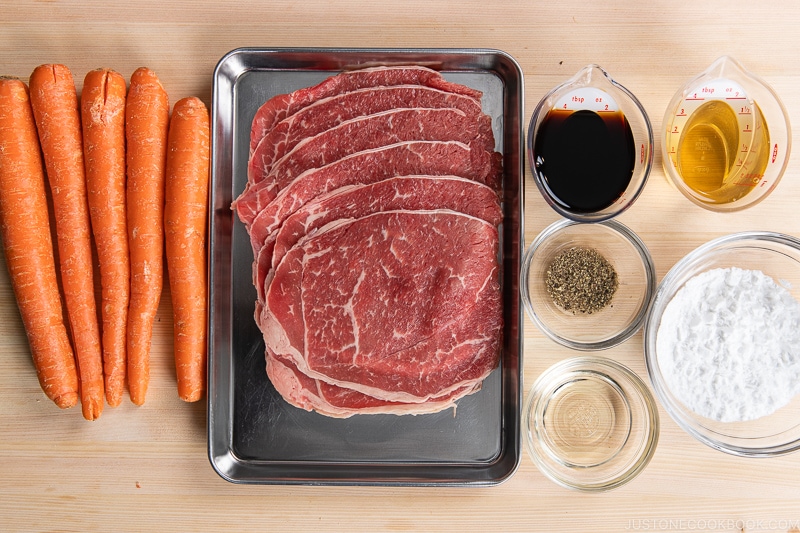
- Bring a medium pot of water to a boil. If you don‘t have thinly sliced beef, cut a block of rib eye into thin slices following my tutorial. FYI, each slice is roughly 20 grams.
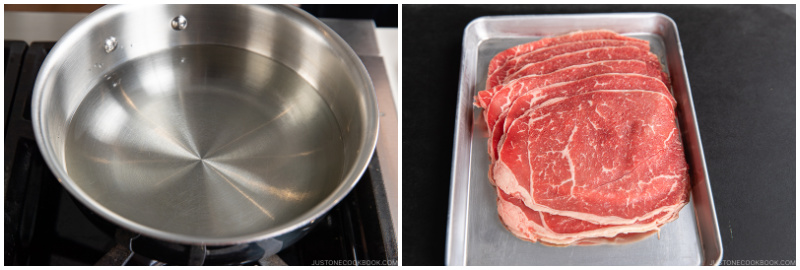
To Prepare the Carrot Beef Rolls
- Peel ¾ lb carrots and cut off the ends.
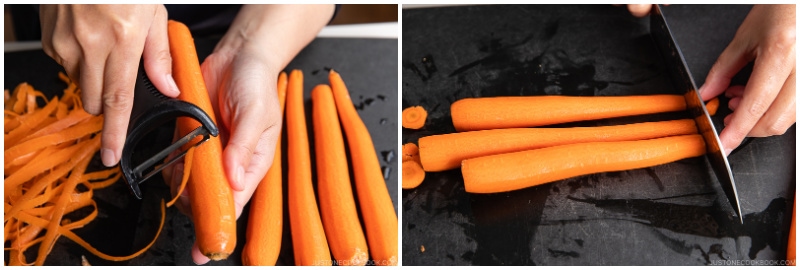
- Cut the carrot in half widthwise (or the width of your sliced beef) and then cut it into thin slabs.
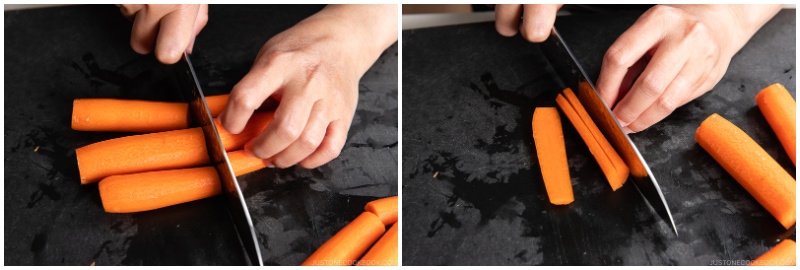
- Cut the slabs into thin julienned strips.
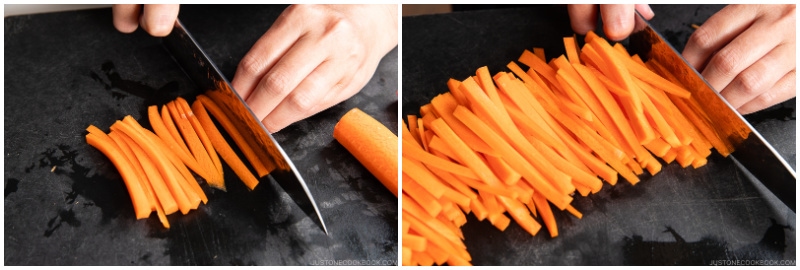
- Blanch the julienned strips in boiling water for 2–3 minutes, or until tender. Alternatively, you can microwave the carrot.
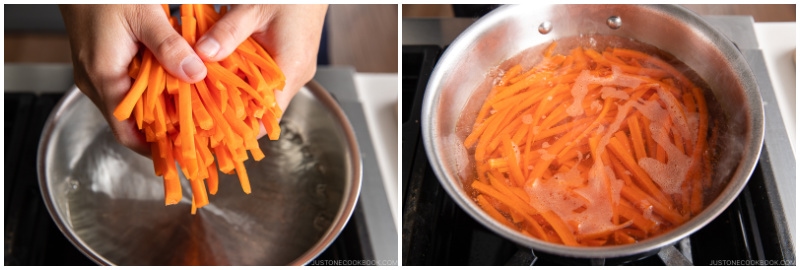
- Drain the carrot strips and roughly divide them into the number of beef slices (I have 16 pieces of thinly sliced beef).
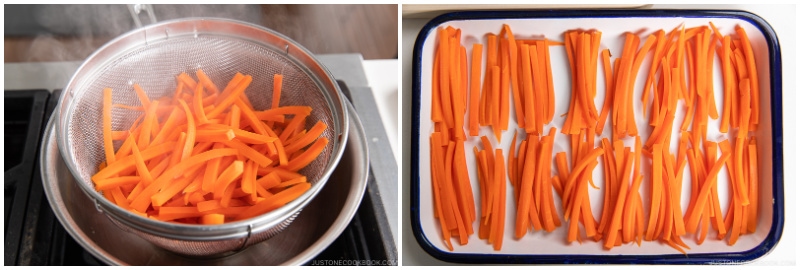
- From ¾ lb thinly sliced beef (such as ribeye), prepare 2–3 slices of beef on the cutting board at a time. With ¼ tsp freshly ground black pepper, sprinkle a little black pepper on each beef slice. Place several carrot strips at the bottom end of each beef slice and roll them up.
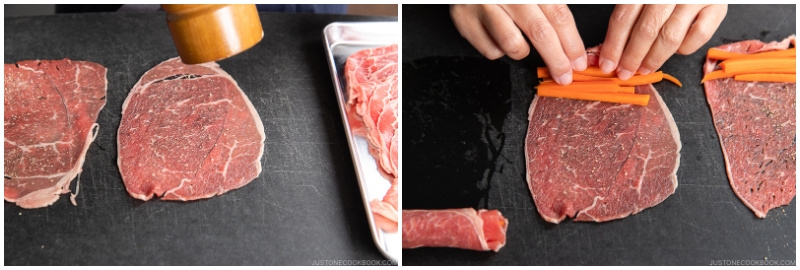
- Continue with the rest of the beef and carrot.
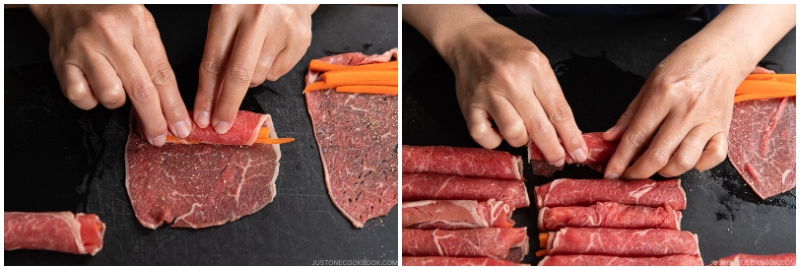
- Lightly coat the beef rolls with ¼ cup potato starch or cornstarch, shaking off the excess.
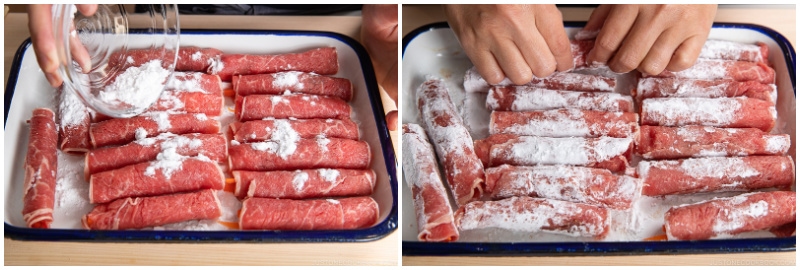
To Cook the Carrot Beef Rolls
- Heat a large frying pan on medium heat. When it‘s hot, add 1 Tbsp oil and distribute it evenly. When the oil is hot, add the beef rolls in batches. It is very important to work in batches, instead of crowding the pan and steaming the beef rolls.
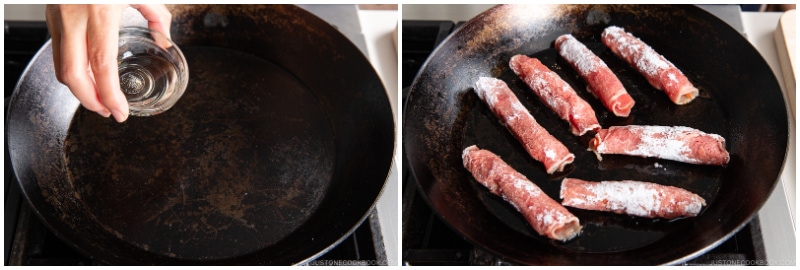
- When each beef roll is nicely seared all around, transfer to a plate.
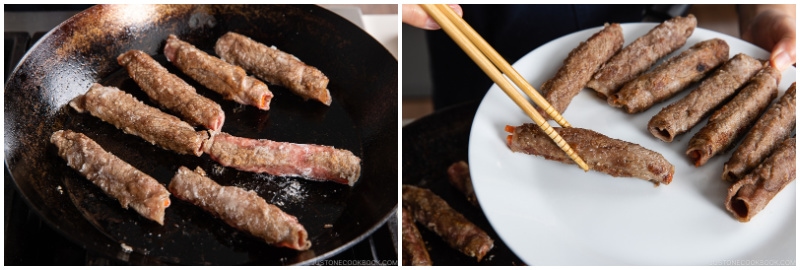
- Work on the next batch. If necessary, add another 1 Tbsp oil into the pan. When all the beef rolls are nicely seared, put them back into the pan.
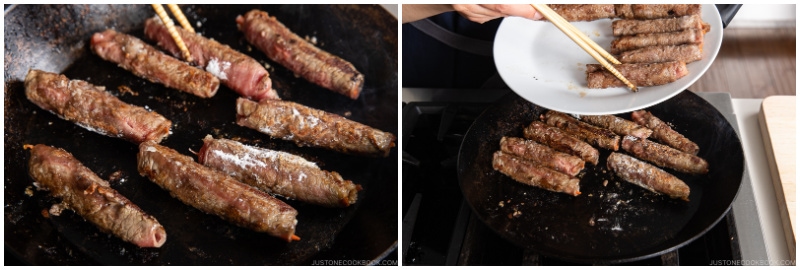
- After giving a quick sear to warm up the beef rolls, add 4 Tbsp mirin and 4 Tbsp soy sauce.
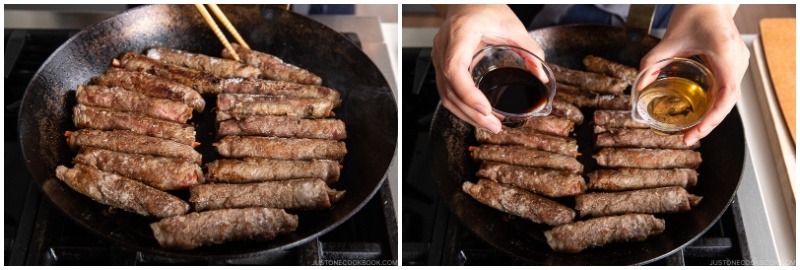
- When the sauce starts sizzling, quickly coat the beef rolls with the sauce. Remove from the heat as the sauce will quickly thicken with the potato starch from the beef rolls.
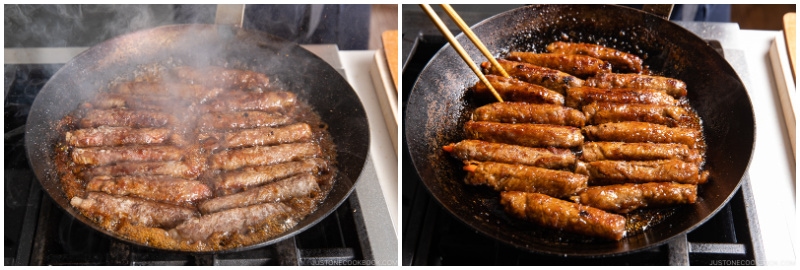
- Cut the beef rolls in half or you can serve them without cutting. Enjoy!
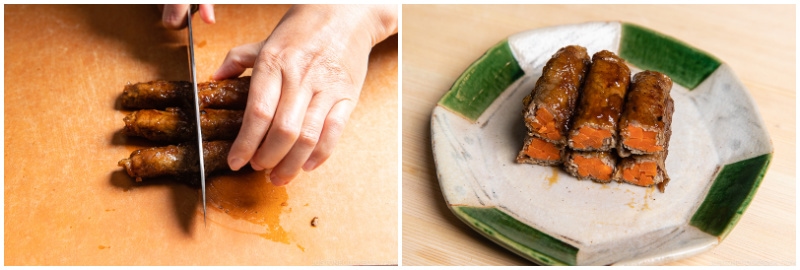
To Store
- You can keep the leftovers in an airtight container and store in the refrigerator for 3 days or in the freezer for a month.
Nutrition
Editor’s Note: This post was originally published on May 30, 2011. The images and the blog content were updated in March 2021.
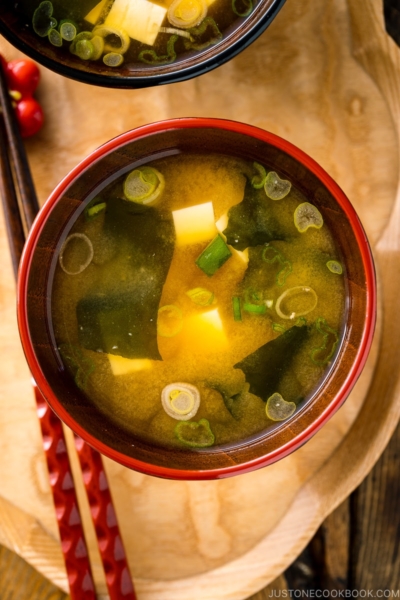
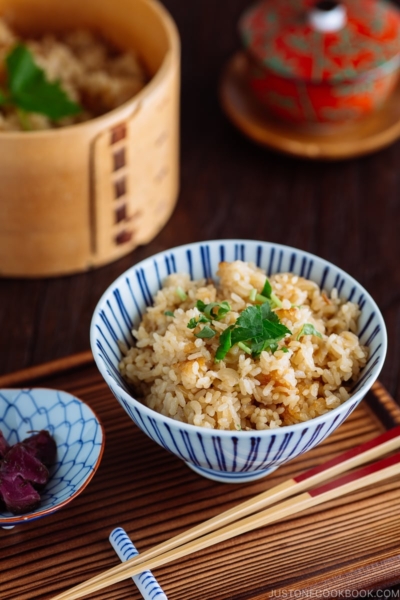
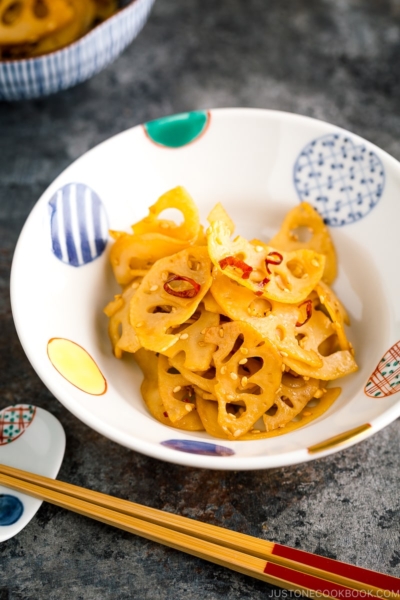
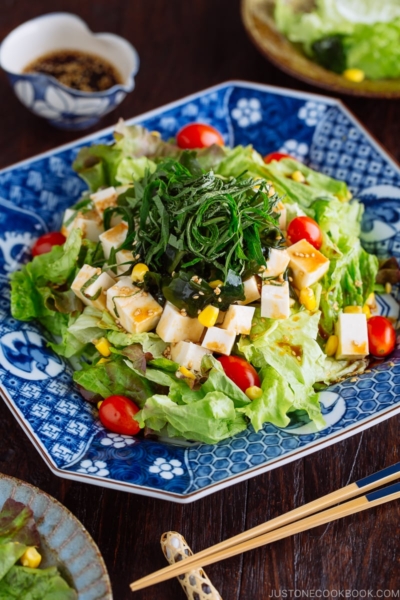
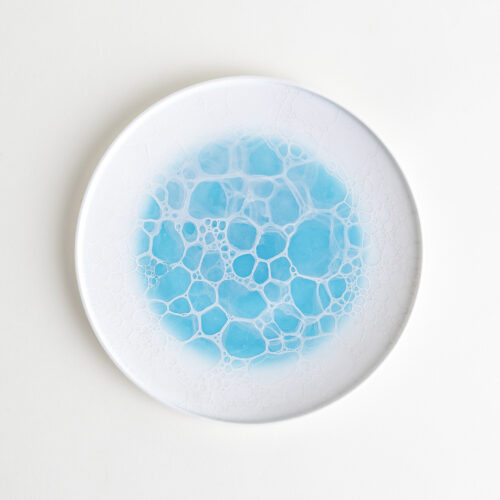

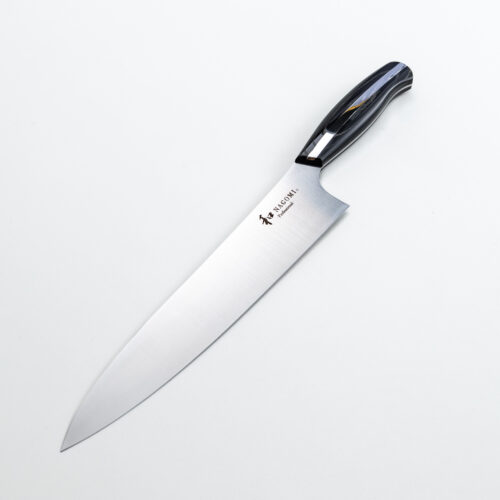

Can the meat with veg be rolled ahead, kept in fridge overnight, then in the morning coat with the starch before cooking? I want to make this for kids school lunch
Hi ktyfan, Thank you very much for reading Nami’s post and trying her recipe!
We recommend preparing the carrot and stopping after Step 5, then rolling it and coat in the morning.
You can also make this dish ahead of time: Keep it in an airtight container and store it in the refrigerator for up to three days or in the freezer for a month.
We hope this helps!
Just made this and its delicious! Thanks for sharing the recipes.
May I ask how do you ideally reheat the meat after you freeze the leftover?
pan fry again and add more sauce to prevent drying?
Hi Rachel! Thank you very much for trying Nami’s recipe and for your kind feedback!
We are glad to hear you enjoyed it!
To reheat this dish, the easiest way is to use a microwave. If you pan-fry again, yes, you might want to add sauce and a bit of water and use a lid to keep the moisture.
We hope this helps!
Just made this for dinner tonight – delicious! Found thinly sliced beef from Stemple Creek Ranch (listed as carne asada on Good Eggs) so used that instead. It’s slightly thicker than the shabu shabu but still came out delicious with a little more searing time. Thank you, Nami!
Hi Mary! Wow!🤩 That looks so delicious! Thank you very much for posting the picture!
Nami and JOC team are so happy to see your beef rolls!
Thank you for trying Nami’s recipe and for your kind feedback.😊
I love this recipe! I had to substitute a few things:
There was thin cut beef available, but it was wagyu beef and super expensive, so I got pork instead. I used asparagus because I hate cutting carrots. It was still delicious! Very easy and flavorful.
Hi Amber, Thank you very much for trying Nami’s recipe and sharing your cooking experience with us!
We are glad to hear you love this recipe. Happy Cooking!
Hoping to make this weekend. I absolutely love your ad free option for membership! Thank you!!!
Hi Marge! Nami and JOC team are so happy to hear you love ad-free JOC Plus membership!
https://www.justonecookbook.com/joc-plus-membership/
Thank you very much for trying many recipes and for your sweet feedback. We hope you enjoy these Carrot beef Rolls too.🥰
Hi Nami
Can’t wait to try this dish but before I do could you tell me how much cooking oil I would need to cook the rolls? I’m thinking that the beef will give off a lot of oil. Or can I fry the rolls in some of the soy and mirin sauce.
Hi Kazy! It depends on the cut of beef how much oil come out – but in the beggining, you don’t want the beef to stick to the pan (for that reason, non-stick pan works great too). I’d say 1 to 1 1/2 tbsp, depending on the size of your pan? You can wipe off excess oil with paper towel later before seasoning. Hope this helps!
Thanks so much. That really helps.
Hey Namiko,
I made these last Friday! They turned out good! I was wondering what kind of soy sauce you used? I used kikkoman, the original (dark), would there have been a difference if I used light?
I actually forgot to drench them in cornstarch but it still turned out yummy! I might try putting mushrooms next time.. but this is a keeper
Hi Bing! Thank you so much for leaving a comment here. 🙂 I”m glad you liked this dish. I use Japanese organic soy sauce (imported from Japan). We don’t have dark or light soy sauce. Only option we have is either regular or less sodium. I know Chinese soy sauce has dark (which seems very thicker sauce than Japanese regular soy sauce) and light. If you used Kikkoman, then I assume you have regular kind. I don’t have light soy sauce at home so I am not sure… should work if the taste is same/similar. If you apply corn starch to the meat, the sauce gets thicken. Also, corn starch makes the meat softer so it’s nice texture when you bite to it. We sometimes cook without it too, so that’s okay. 🙂 Thank you again for cooking this dish!